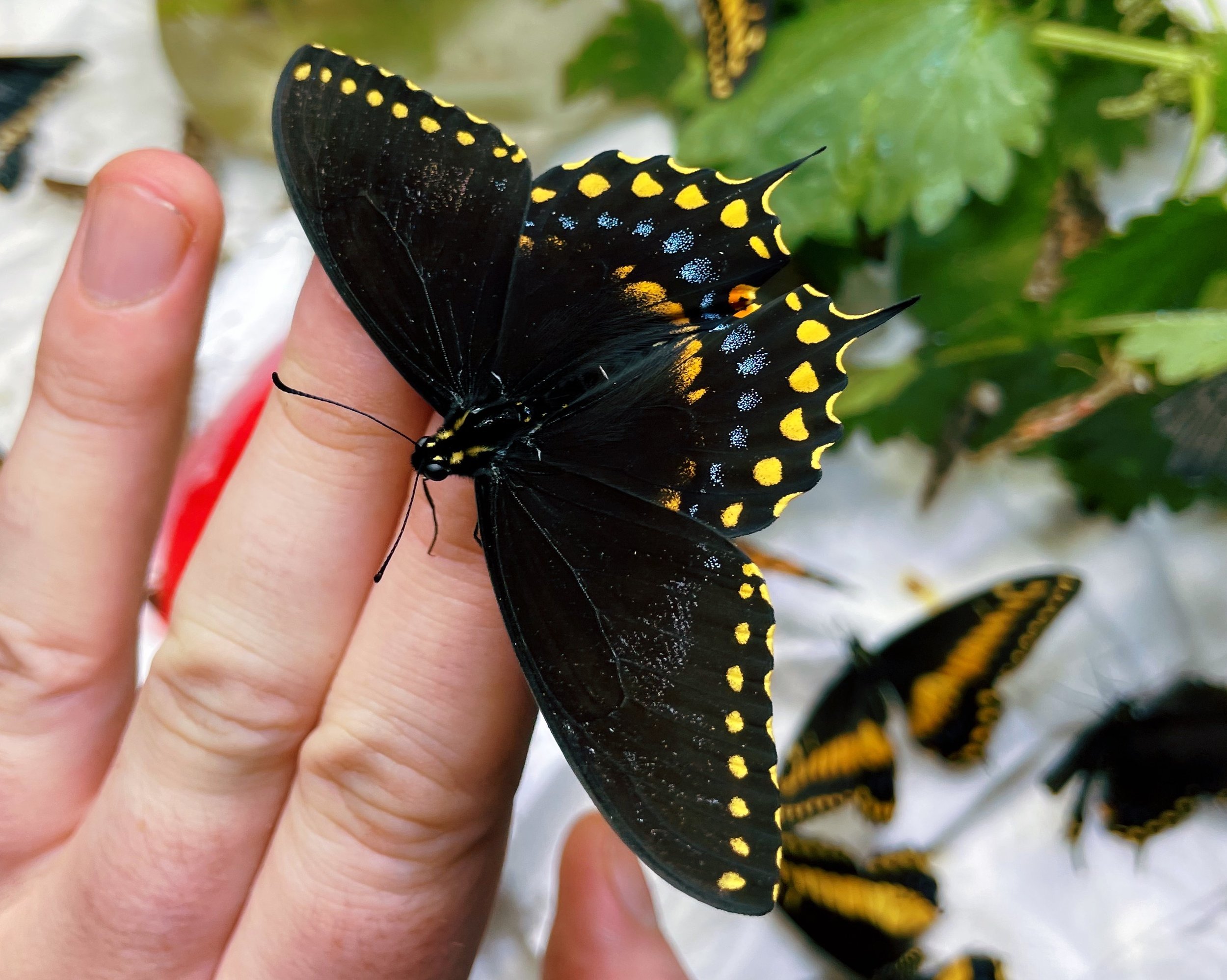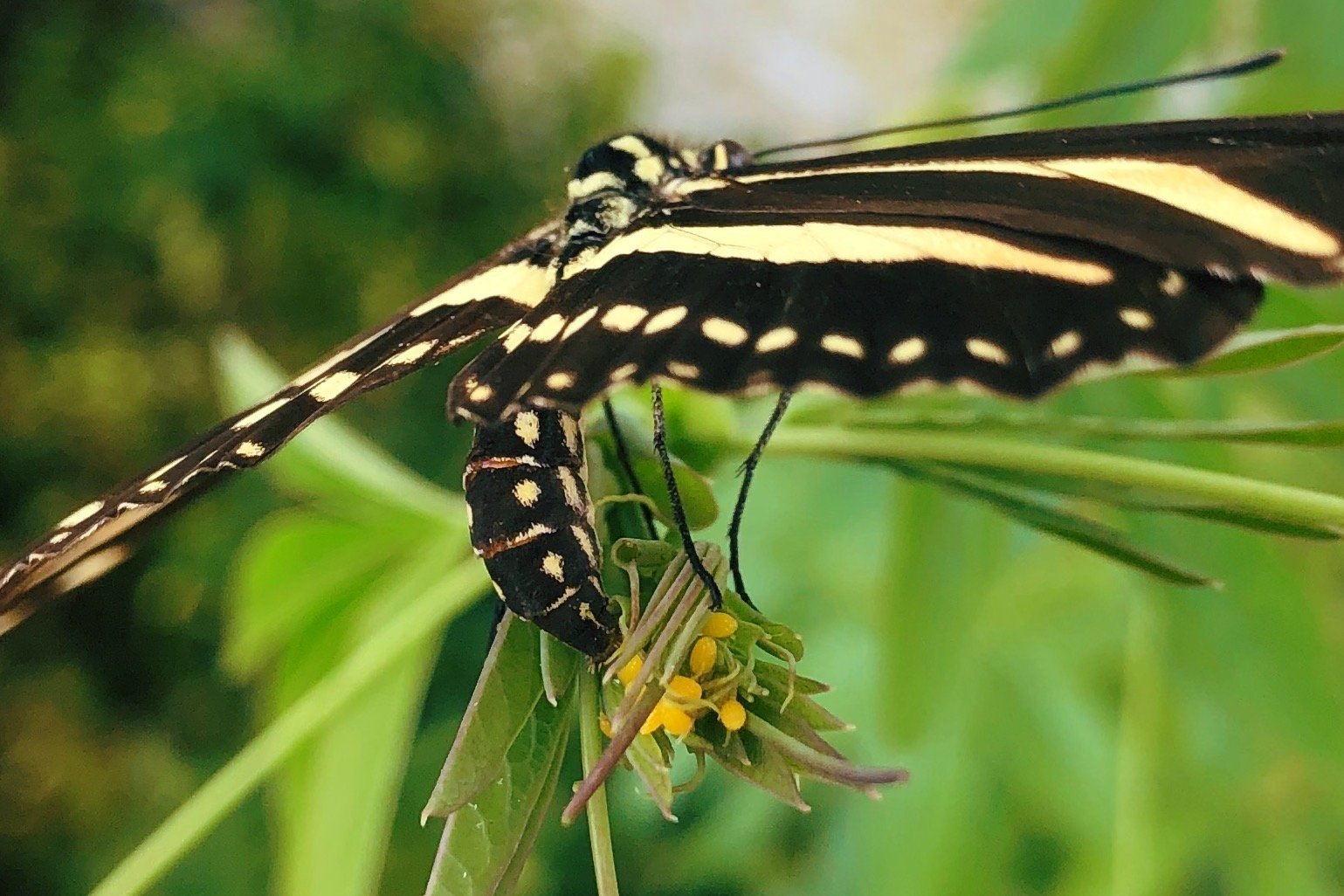Passionvine Butterfly Care Guide
This guide is written in regard to Passionvine & Longwing Butterflies (available to order here), including species in the families Heliconius & Cethosia.




Eggs should be kept in closed plastic containers to prevent them drying out - these eggs are more sensitive to changes in humidity than other butterfly species. They will hatch within days as the egg stage is very short.
You can add leaves to their container once the caterpillars hatch, but do not add any prior to this as leaves will release moisture and this often causes the eggs to mould before hatching, killing them. Once the larvae have established and are feeding well, they can be moved to mesh cages or larger plastic containers if preferred. Additionally, larvae do very well on living host plants if you have some potted or in a greenhouse.
Passionvine Butterflies, including Heliconius, Dryas, Agraulis & Cethosia, feed on Passiflora plants - as their name suggests. Many species have specific host plants, however if you purchased the mixed eggs/larvae from this site, the species included all breed using Passiflora caerulea, as well as P. biflora & P. punctata.
The photo above illustrates a female Zebra Longwing (Heliconius charithonia) laying eggs on new growth tips of Passiflora caerulea. This species in particular is almost always included in the mix due to its popularity and ease of breeding and rearing.
These species benefit from a humid environment in all stages, so I would recommend rearing larvae in closed plastic containers relative to their size/stage throughout, unless you are rearing them in a greenhouse or similar setup with a naturally high humidity level (80%+).
Caterpillars grow very quickly, usually pupating by about week 3 (maybe slightly longer for Cethosia). The photo below illustrates a Zebra Longwing pupa.

At this point, caterpillars will secure themselves to the host plant or roof of their enclosure to pupate. The pupae are small and intricate, often resembling dead leaves, acting as a disguise in nature.
Pupae can be left in situ if conditions are right, or moved to a different setup for pupae - following the care guide for pupae will produce best results. The adult butterfly will then emerge 1-2 weeks later - often much faster than other butterfly species.
Adult butterflies can be cared for according to this guide. They are very straightforward, simply requiring ample space to fly and a food source. Most importantly, Longwing butterflies require amino acids from pollen in their diet, so should always have access to flowers to feed from (this can still be supplemented with nectar solution). If this is not possible, e.g. in the winter, you can supplement amino acids in powdered form by mixing with the nectar solution.
With amino acids in their diet, these butterflies will live for several months. Postman Butterflies (Heliconius melpomene) particularly seems to benefit from this, only living for about 2 weeks without supplemental amino acids. With a nutritionally complete diet, the lifespan extends to several months (usually at least three but often 5-6, with some records of 9 months!)
The first photo below illustrates Heliconius charithonia in various stages of development: the brighter pupa is quite fresh, whilst the centre one is close to emerging as you can see the wing patterns of the now fully developed butterfly.
The second photo below shows Heliconius melpomene. There are many different subspecies, and variations within them, so this species has a variety of adult forms - many of which could be mistaken for different species - which may be represented in the mix. The particular individual shown is a subspecies hybrid, produced over multiple generations of cross-breeding, though it most closely represents ssp. cythera, the ‘pianokey’ form.




